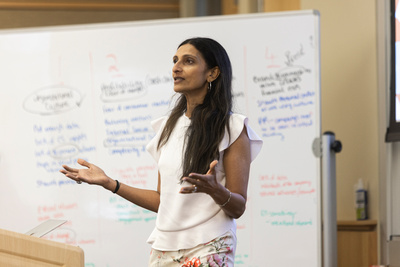Background: Doing Business Project
In the late 1990s and early 2000s, a group of economists at the World Bank and in academia (most notably Simeon Djankov but also Joseph Stiglitz, Andrei Shleifer, Rafael LaPorta, Florencio Lopez de Silanes, Robert Vishny, and Oliver Hart among many others) became interesting in both the theory and measurement of property rights and other regulatory barriers to doing business. The 2002 World Development Report titled, “Building Institutions for Markets,” brought all these threads together into one place.
These efforts led to the creation of the Doing Business (or Ease of Doing Business) project at the World Bank in 2003. The first Doing Business 2004 report contained five measurement indicators for 133 nations. It would eventually grow to 11 different indicators covering 190 countries. The 11 areas are:
-
Starting a business – Procedures, time, cost, and minimum capital to open a new business
-
Dealing with construction permits – Procedures, time, and cost to build a warehouse
-
Getting electricity – procedures, time, and cost required for a business to obtain a permanent electricity connection for a newly constructed warehouse
-
Registering property – Procedures, time, and cost to register commercial real estate
-
Getting credit – Strength of legal rights index, depth of credit information index
-
Protecting investors – Indices on the extent of disclosure, the extent of director liability, and ease of shareholder suits
-
Paying taxes – Number of taxes paid, hours per year spent preparing tax returns, and total tax payable as a share of gross profit
-
Trading across borders – Number of documents, cost, and time necessary to export and import
-
Enforcing contracts – Procedures, time, and cost to enforce a debt contract
-
Resolving insolvency – The time, cost, and recovery rate (%) under a bankruptcy proceeding
-
Employing workers[1] – Hiring, working hours, redundancy rules and cost
The basic methodology used in the original DB project was to send detailed questionnaires based on specific cases to business professionals in the respective fields across the world. For example, in the starting a business area, respondents are asked about a 100% domestically owned company with 10-15 workers conducting general industrial or construction activities using leased commercial space of about 10,000 sq ft. They are then asked about the business start-up process in terms of the number of procedures, time (in days), cost (in money), and mandated-capital requirements.
To assure consistency, the respondents are asked to justify any differences or changes in their answers relative to the answers they provided the previous year (or relative to the previous year’s overall answer). Once the questionnaires are returned, staff would compile the answers and build the final estimates. The case details and questions varied across the 11 areas, but this was the basic approach throughout.
The impact of the Doing Business project from 2004-2019 is almost impossible to overstate. The World Bank claims that the project was directly responsible for 3,847 distinct policy reforms. If you conduct an internet search using “world bank” “doing business”, it returns 4.8 million hits in Google and 152,000 hits in in Google Scholar.A more aggressive search using the search terms world bank doing business index (i.e., without quotes) returns 697 million hits in Google and 4.2 million hits in Google Scholar. It is safe to say that no World Bank project has created this much reaction and interest.
The Doing Business data have also been used in other indexes including especially the economic freedom indexes published by the Fraser Institute and Heritage Foundation and the prosperity index published by the Legatum Institute.
